Kingdom Wildlife
Jewels in the crown: Introducing the endemic birds of Arabia
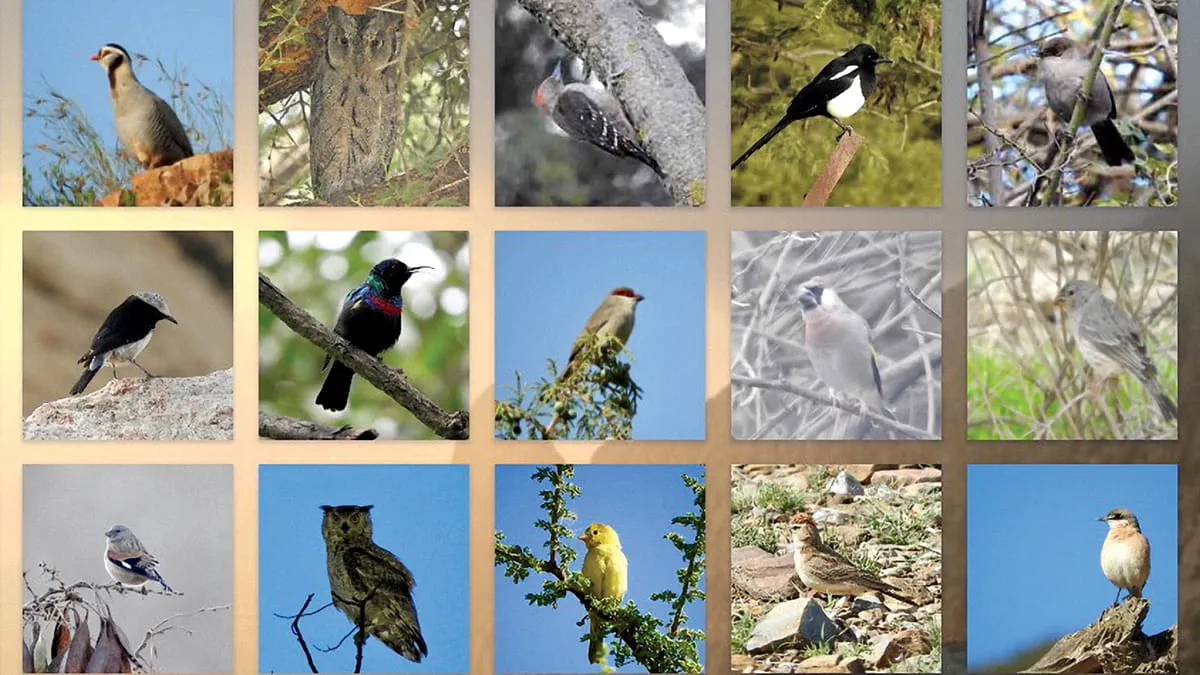
Global December 09, 2020 - By
Saudi Arabia is a bird watchers paradise, and here’s some to keep an eye out for.
Saudi Arabia stands as the easiest country in the world in which to view the highest number of endemic bird species. Not to mention it’s the only place in the world where you can experience the Asir magpie, a charismatic corvid endemic solely to the Kingdom.
Some subspecies of more widespread African birds, such as the Arabian Spotted Eagle-Owl, Buff-breasted Wheatear, and the Arabian Shining Sunbird, have been proposed for full species status as well, holding out the promise of a further boost to the endemic appeal of Arabia for birdwatchers and ecotourists around the world.
Listed next are the 13 species whose endemism on the peninsula is currently considered beyond dispute. For those, like me, keen to identify birds by ear, you can scan the QR code in each picture with your mobile or tablet camera to listen to their vocalizations on Xeno-Canto.
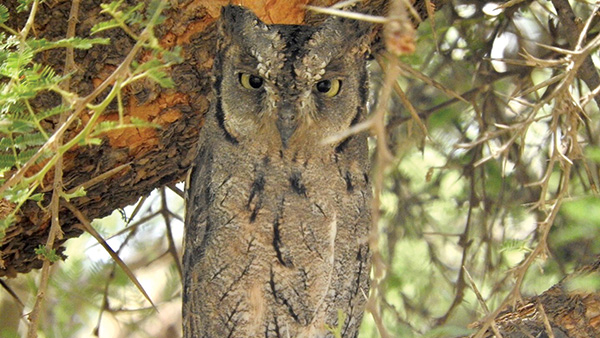
Arabian scops owl Otus pamelae (listen)
The Arabian scops owl is quite common in the wooded hills and wadis in the Asir highlands. Like all scops owls, it is possible to stumble upon one in its roost, as I did at Al Muraba’a National Park this past summer, yet the best way is to get out with a flashlight in areas where they’re calling.
In Saudi, I’ve seen but more often heard them around Tanomah and Abha. Like the Arabian Spotted Eagle-Owl, they can occur at different elevations — near sea level outside Salalah, Oman, and close to 3,000 meters at the edge of the Asir escarpment.
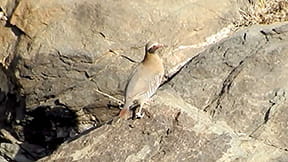
Philby’s partridge Alectoris philbyi (listen)
Philby’s partridge is one of two endemic partridges on the Arabian Peninsula. Like all partridges, this species is quite shy and rarely allows a close approach. As they sometimes forage together with the Arabian partridge, separating the two in a blur of wings and bodies can be tricky. Watch out for reddish-brown tail feathers on Philby’s, and of course, their distinctive black throat patch.
I’ve seen them in the western highlands just south of Taif and around the hills and escarpment edge near the scenic town of Tanomah. While not as abundant nor as widespread as the Arabian partridge, they have been quite reliable around the latter.
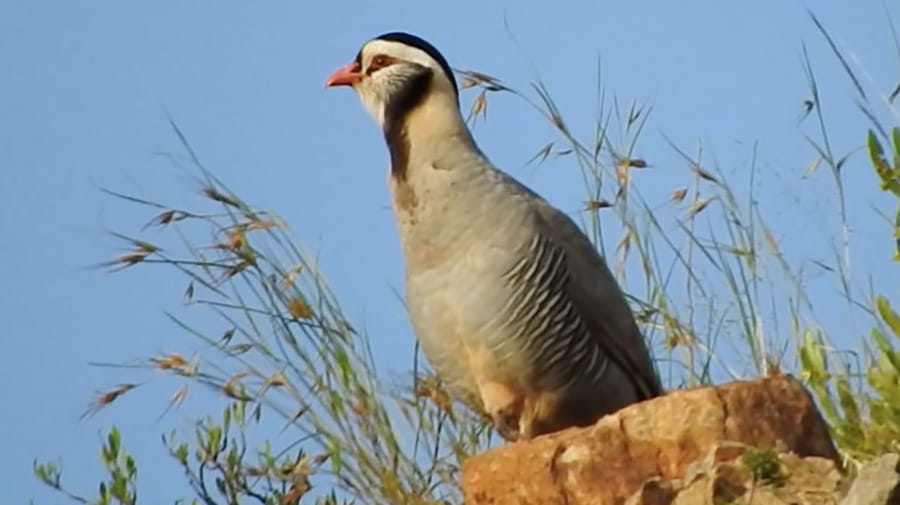
Arabian partridge Alectoris melanocephala (listen)
The Arabian partridge is much more abundant than Philby’s, and is one of the most widespread of the Arabian endemics. Unlike Philby’s, the Arabian is much less particular about habitat selection and can be found at lower elevations than its congener. Like Philby’s though, they can be shy and difficult to approach.
I've encountered them several times around Abha and Tanomah, frequently hearing them before seeing them. In flight, watch for black tail feathers and the Arabian’s white throat and eyebrow.
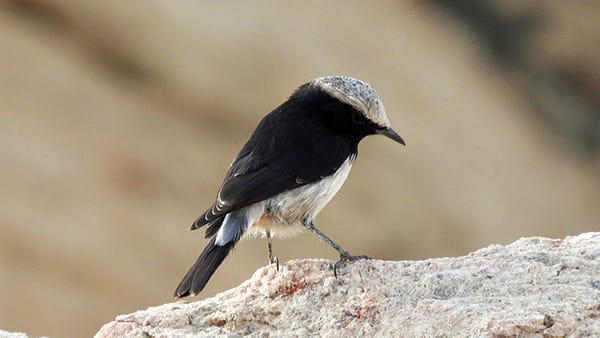
Arabian wheatear Oenanthe lugentoides (listen)
The status of the Arabian wheatear as a distinct species is still being debated, with some arguing it’s a subspecies of mourning wheatear. However, female mournings resembles the male while the male and female Arabian wheatear, which are often never far apart, are dimorphic, meaning the female has a very distinct appearance from the male.
Either way, these smart-looking wheatears are resident and quite abundant at a range of elevations from Taif down through Jazan Province to the south. They can be reliably found on a tour of the picturesque farming villages around Al Soudah Mountain.
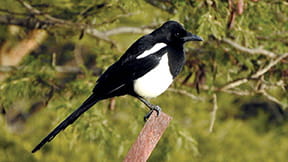
Asir magpie Pica asirensis (listen)
The Asir magpie is the one Arabian endemic found exclusively in Saudi Arabia. It was once considered a subspecies of the widespread Eurasian magpie, but differences in voice and appearance led to the DNA work required to establish it as a separate species. Its range appears to have shrunk over the years and currently the magpies have only been encountered from Al Namas south to Billahmer, a distance of only about 80 kilometers.
I’ve seen them in mature juniper woodlands at a few locations near Tanomah and Billahmer. The magpie’s population at the moment is believed to be around 100 pairs at best, making it one of the rarest birds in the world. Hopefully, the Saudi government with the help of concerned entities, like Aramco, will implement a viable plan for keeping this species — a potential flagship for Saudi’s budding ecotourism industry — from going extinct.
As depressing as the magpies’ current status is, they can be encountered fairly easily within their current range in wooded wadis in the Asir highlands as well as nearby villages and adjacent farming terraces.
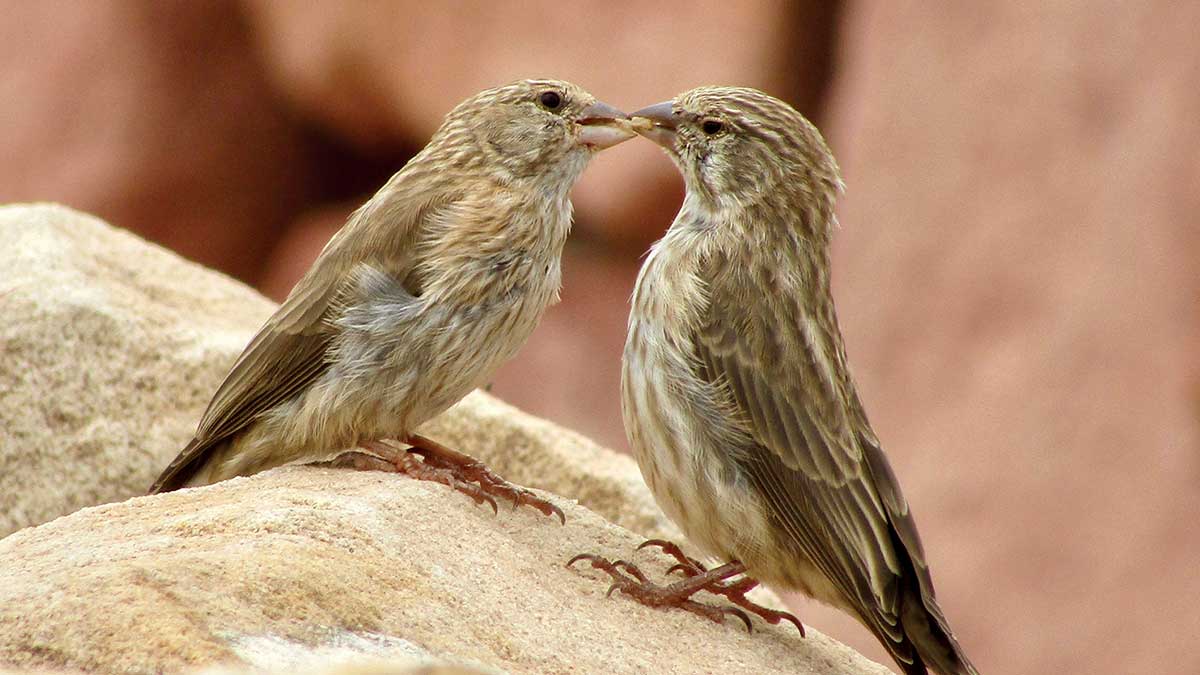
Yemen serin Crithagra menachensis (listen)
The Yemen serin is not quite as common in Saudi as the Arabian serin. I’ve seen them far less often than the latter. Whereas the latter prefers trees and shrubs, the Yemen serin tends to occupy more open terrain. I first saw them at the Tawi Al Tayr sinkhole near Salalah, Oman, in 2017.
Subsequently, summer 2020 rewarded me with what might be the most reliable spot to find them in Saudi’s southwest — the cliff edge near Al Habala Hanging Village, south of Abha. While both rather drab, the Yemen serin can be distinguished from the Arabian serin by its browner, streakier plumage and dark moustache — the stripe running down at an angle from its eye.
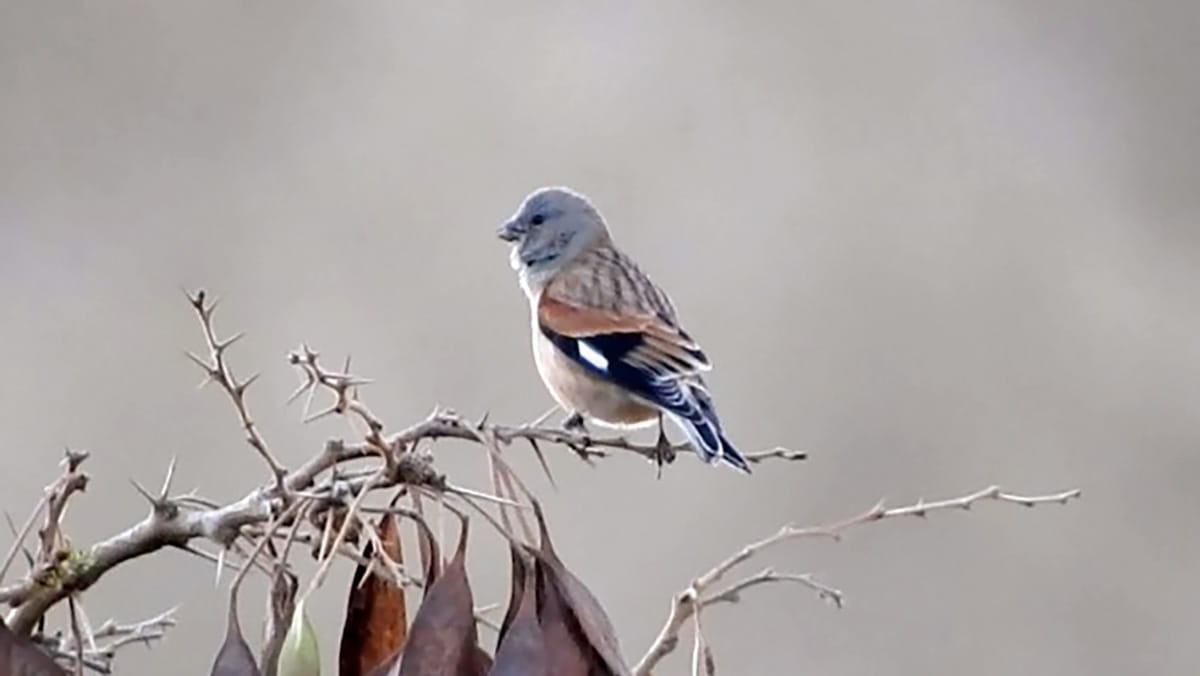
Yemen linnet (Linaria yemenensis) (listen)
The last and surely the sweetest Arabian endemic to be found in Saudi Arabia is the Yemen linnet. This is one of the most abundant and easily encountered of all the Arabian endemics, perhaps second only to the Arabian serin. These lovely birds, whose Arabic name translates as “Yemen apple finch,” can be seen in the highlands throughout the year, but they can be more reliable during the non-breeding months when they form larger flocks. On one brisk winter morning above 2,800 meters, I found my chilled spirits elevated by their lively songs as I explored a wadi near Al Soudah Mountain.
The best thing about the birds of Saudi Arabia’s southwest highlands is their relative abundance. A tour of the natural wonders of the region and you can’t fail to notice the diversity and sheer numbers of the birds all around you. With upwards to 500 species potentially occurring in Saudi throughout the year, there’s far more to encounter in the southwest than the 13 species featured here.
As noted, these birds are endemic to the Arabian Peninsula and can’t be seen anywhere else in the world, some of the boldest representations of the Kingdom’s unique biodiversity — treasure of the avian kind!
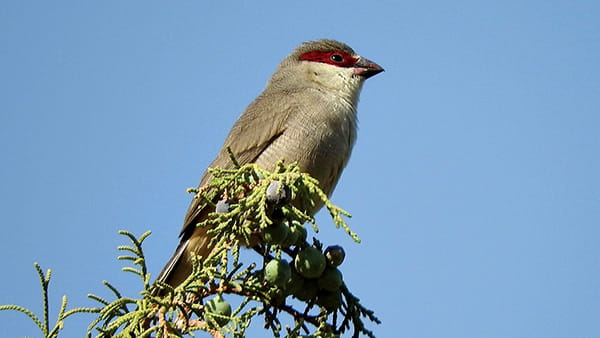
Arabian waxbill Estrilda rufibarba (listen)
The Arabian waxbill is a denizen of dense vegetation in western wadis and agricultural areas at a range of elevations. They do seem to be easier to find in the highlands during the summer months, when the Tihama lowlands are scorching hot.
I’ve seen these little beauties from the Al Shafa area near Taif, around Tanomah and Abha, and as far south as Jazan Province.

Yemen warbler Sylvia buryi (listen)
The Yemen warbler is the biggest skulker among the Arabian endemics. My most recent encounter with this white-eyed lovely produced the image included here, but this was by no means typical for the species, which is often tucked out of sight in deep tangles. Like the Arabian woodpecker, they can be found in the highland juniper forests, but prefer acacia trees with flaking bark for feeding.
Unlike the woodpecker, I’ve had no trouble finding them around the Asir region throughout the year. They can be encountered at virtually all of the birding hotspots around Tanomah, Billahmer, and Abha.
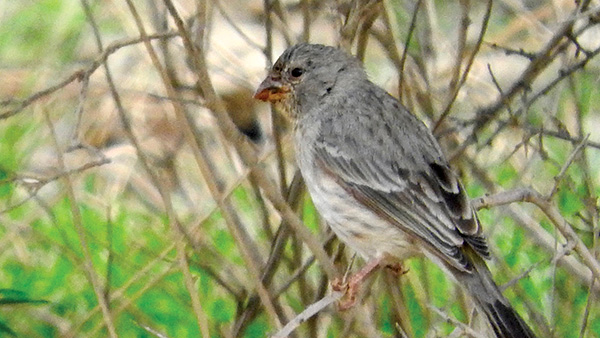
Arabian serin Crithagra rothschildi (listen)
The Arabian serin, also known as olive-rumped serin, is very common in the western highlands throughout the year. I’ve seen them from Taif south to the steep cultivated slopes of Jebel Fayfa in the Jazan Province.
These honey-toned songsters are found in open areas, usually with acacia trees present, like some of the drier wadis east of the Asir escarpment. This is another species that can be readily encountered on a casual tour of the farming villages around Abha.
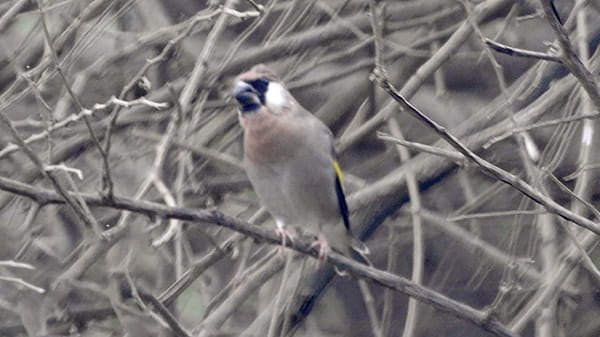
Arabian golden-winged grosbeak Rhynchostruthus percivali (listen)
The Arabian golden-winged grosbeak just might be the most difficult endemic to track down in Saudi Arabia. The most recent sightings I’m aware of were from near Taif in 2015, despite the recent efforts of Frank Rietkerk and myself.
The grosbeaks’ attraction to the wadis near the edge of the Taif escarpment appears to be on account of the large stands of Euphorbia ammak, a succulent plant this species favors; however, the fruiting season for this particular euphorbia is in November, outside of which these birds have not been seen. This Arabian endemic has proven much easier outside of Salalah, Oman, where I saw a male in 2017.
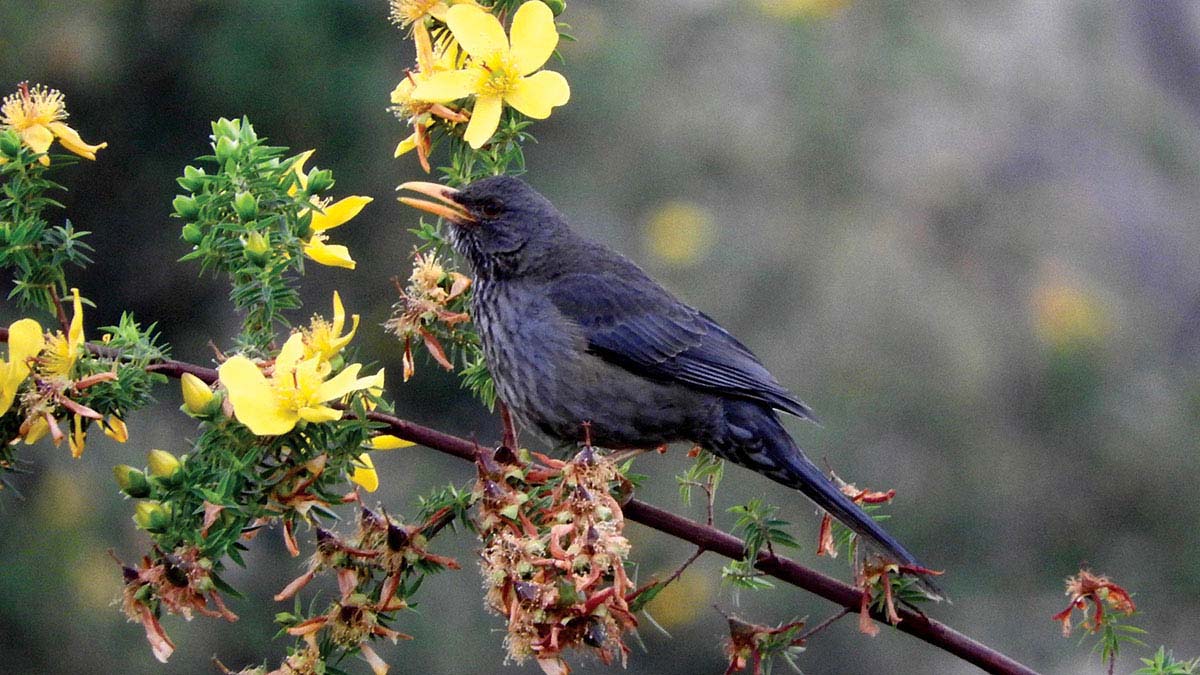
Yemen thrush Turdus menachensis (listen)
The Yemen thrush is quite common in wooded areas — particularly those with junipers — in the Asir highlands from around 2,000 meters and above. I’ve seen them as far north as Taif as well as throughout the year at prime spots near Tanomah and Abha. In fact, there’s no spot along the Asir escarpment from Abha to Tanomah where I haven’t seen them.
That said, the further east away from the escarpment into drier terrain the less common they become. They can also be found associating with Song thrushes during the winter months. My favorite place to watch the Yemen thrush is at Al Soudah waterfall, near the village of Azizah, which is a short drive from Abha.
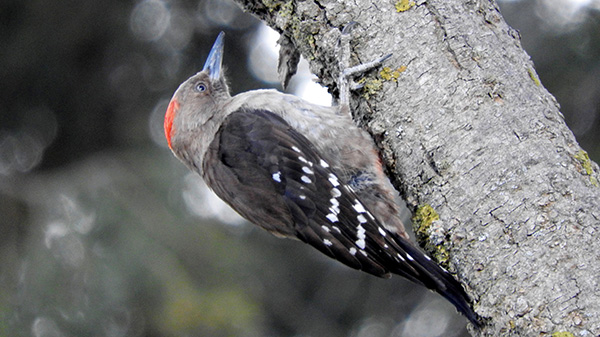
Arabian woodpecker Dendrocoptes dorae (listen)
The Arabian woodpecker is the sole woodpecker species occurring on the Arabian Peninsula. For many years I fantasized about this bird, wondering when the infamously closed off Kingdom would finally open its doors to international visitors. Ultimately, my work got me access, but now that Saudi Arabia offers tourist visas, more foreign birders will be seizing the chance to experience this fascinating species.
Frank Rietkerk, a veterinarian with the National Wildlife Research Center in Taif, has seen them on several occasions in his area, and I’ve seen and heard them in areas with ample mature acacias from Tanomah to just south of Abha. As they appear to be an altitudinal migrant — retreating to lower elevations in the winter — the best time to see them in the Asir highlands is during the summer months.



